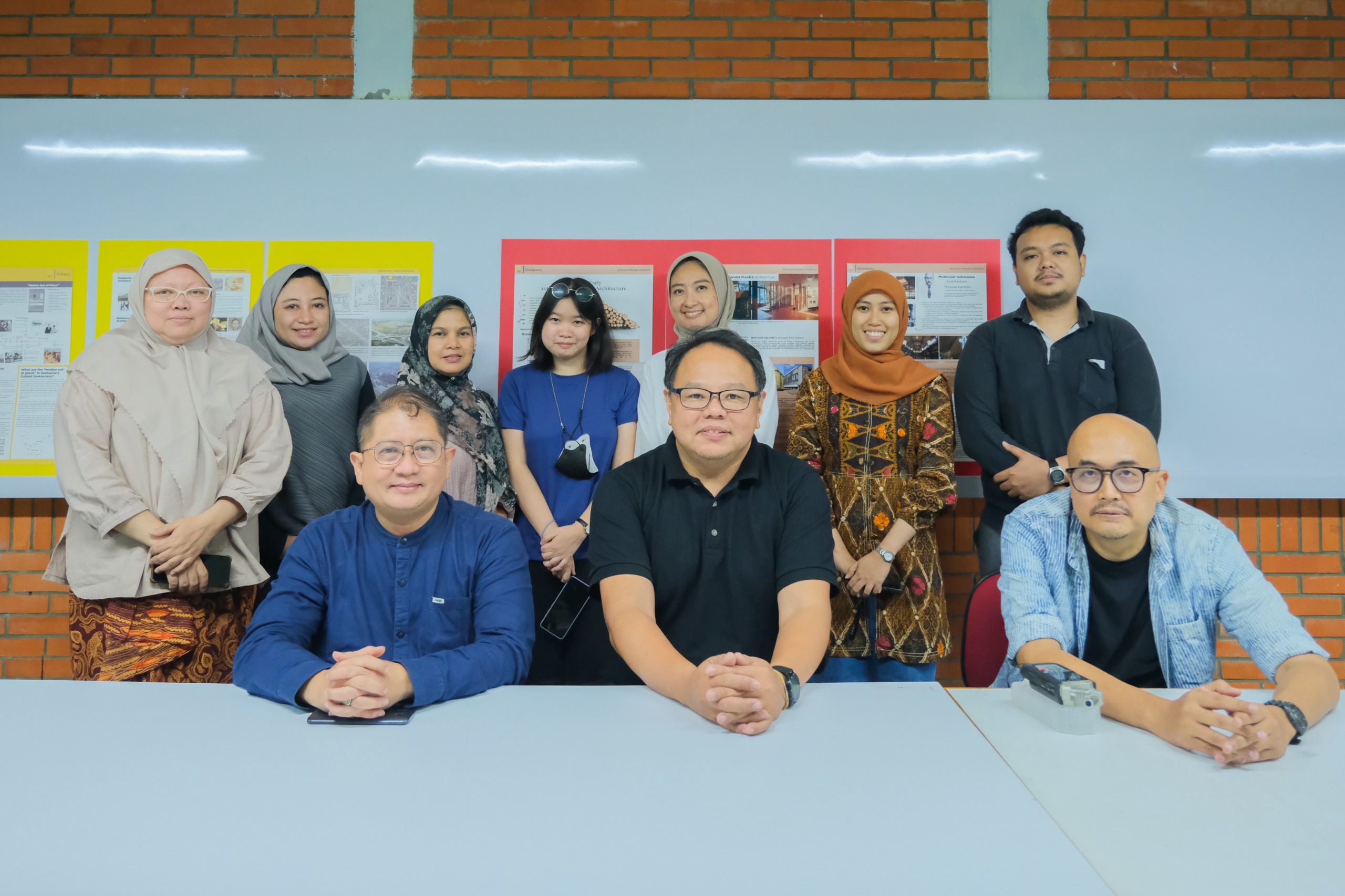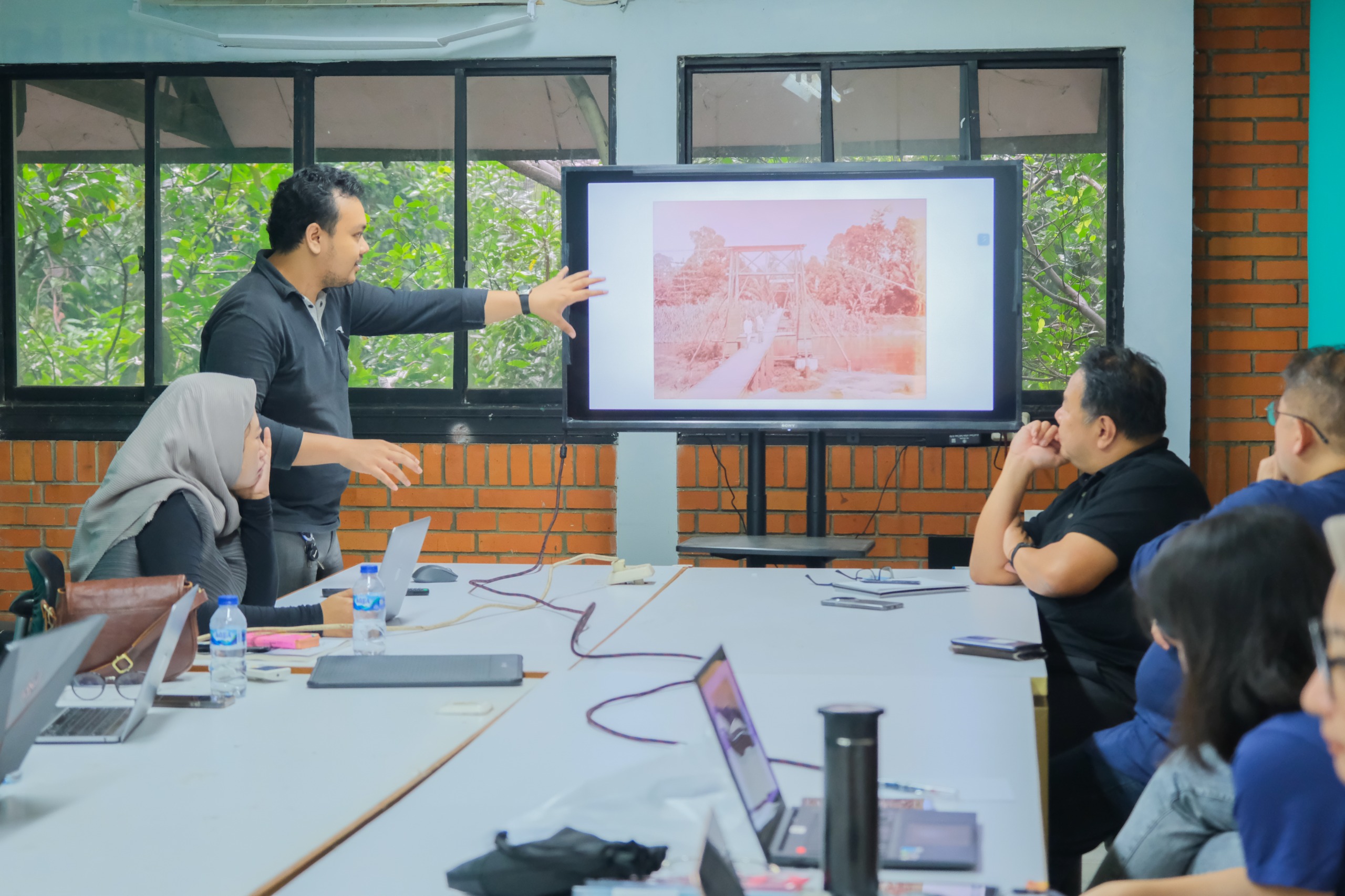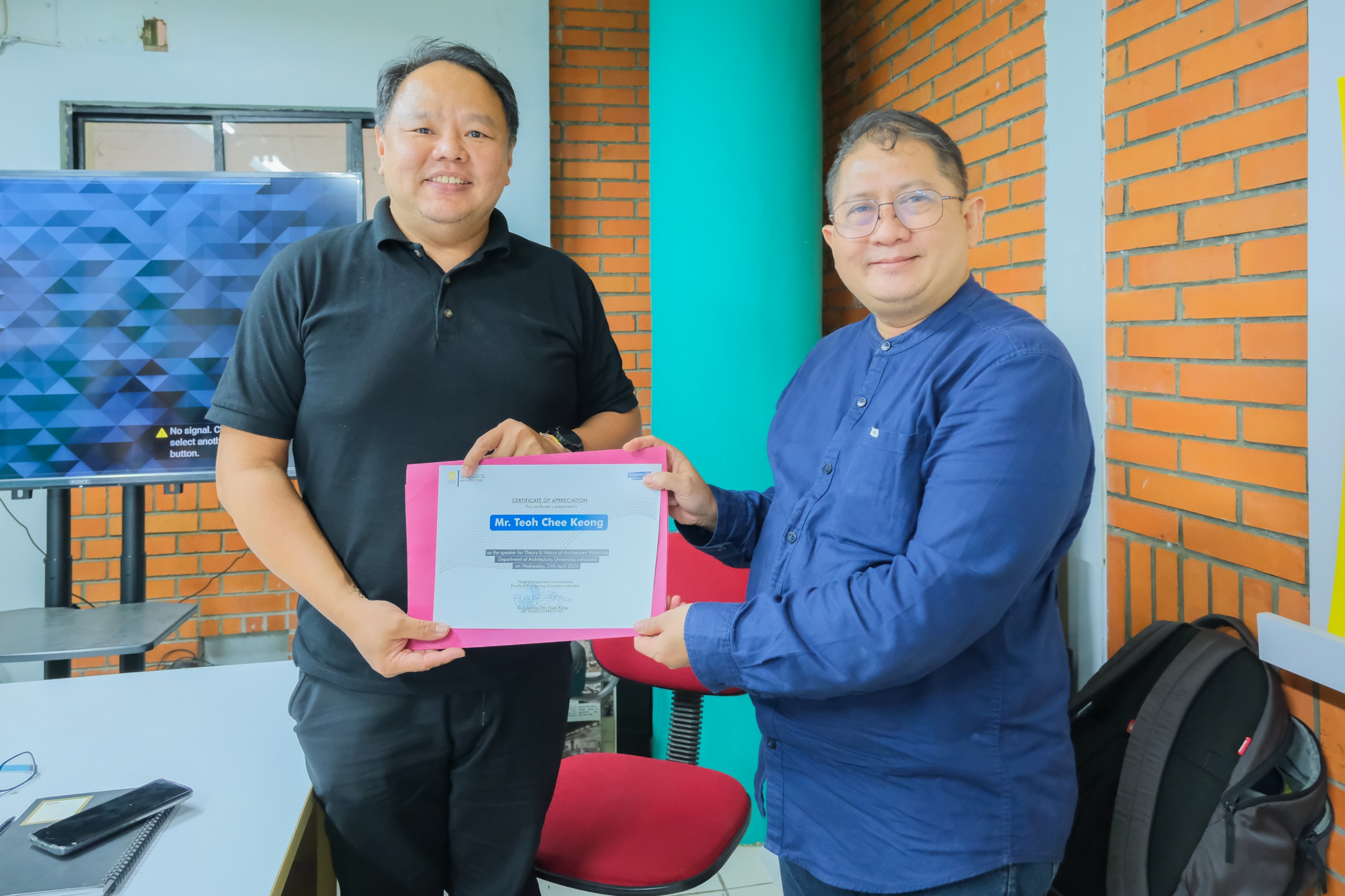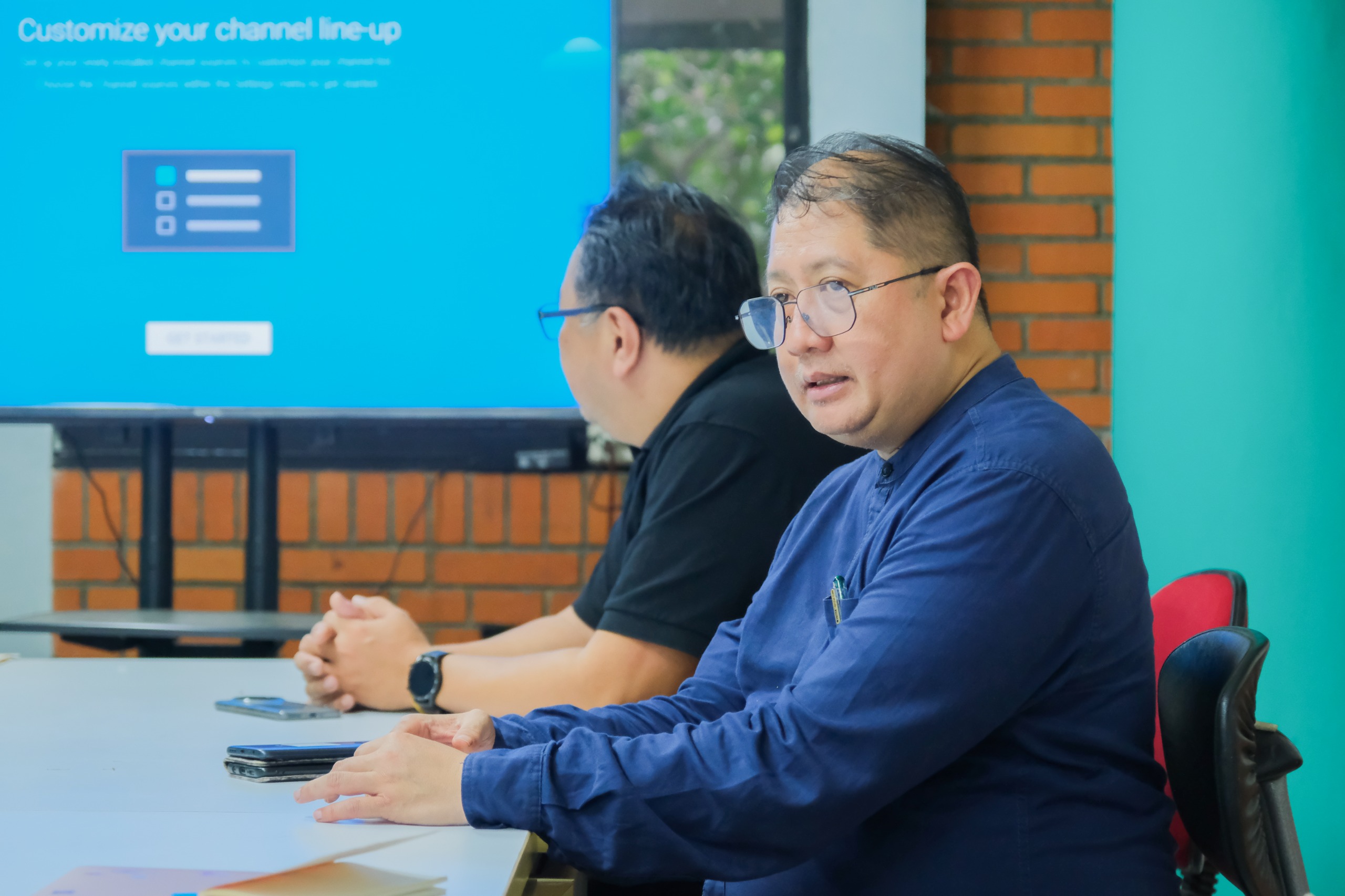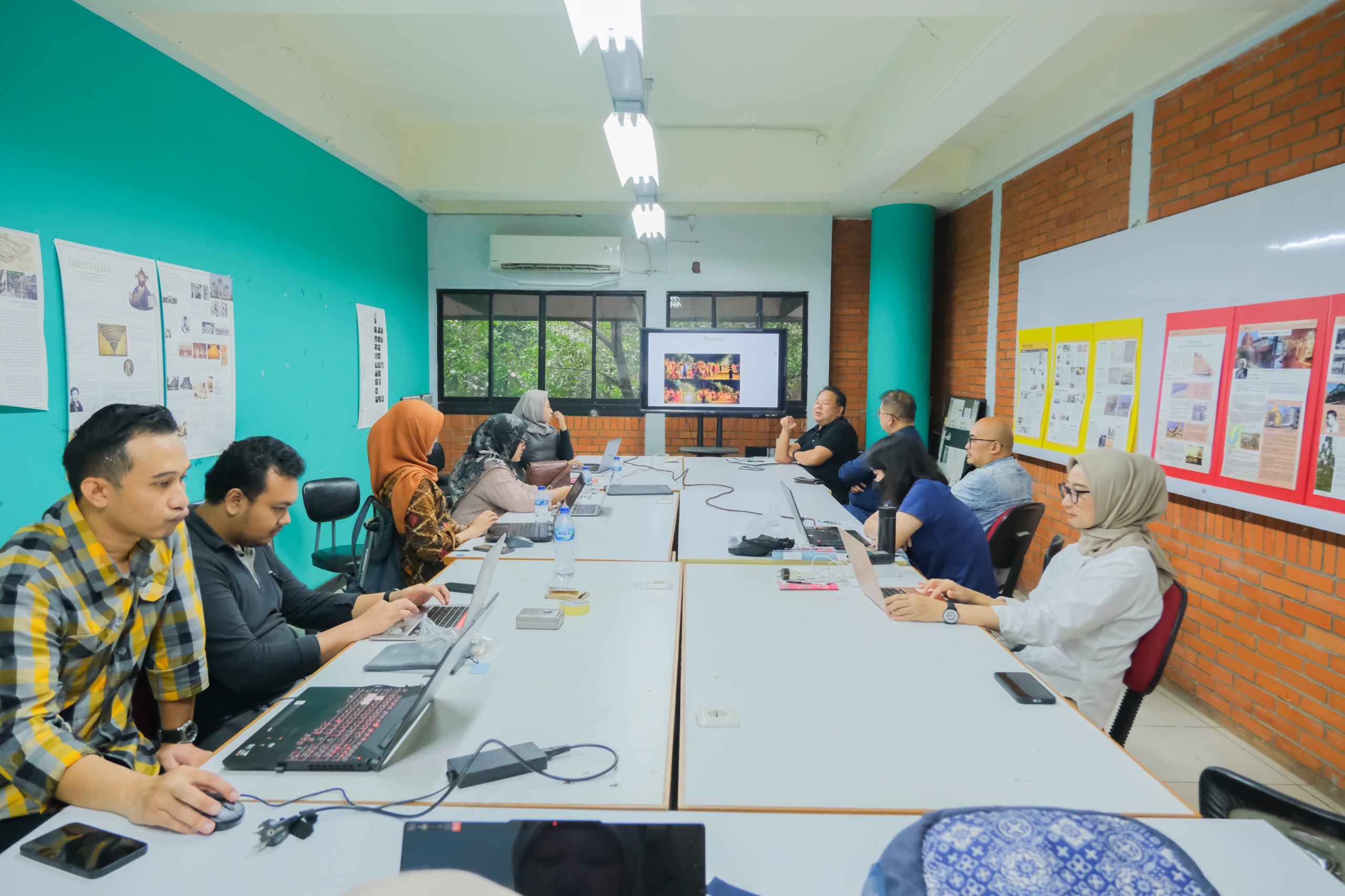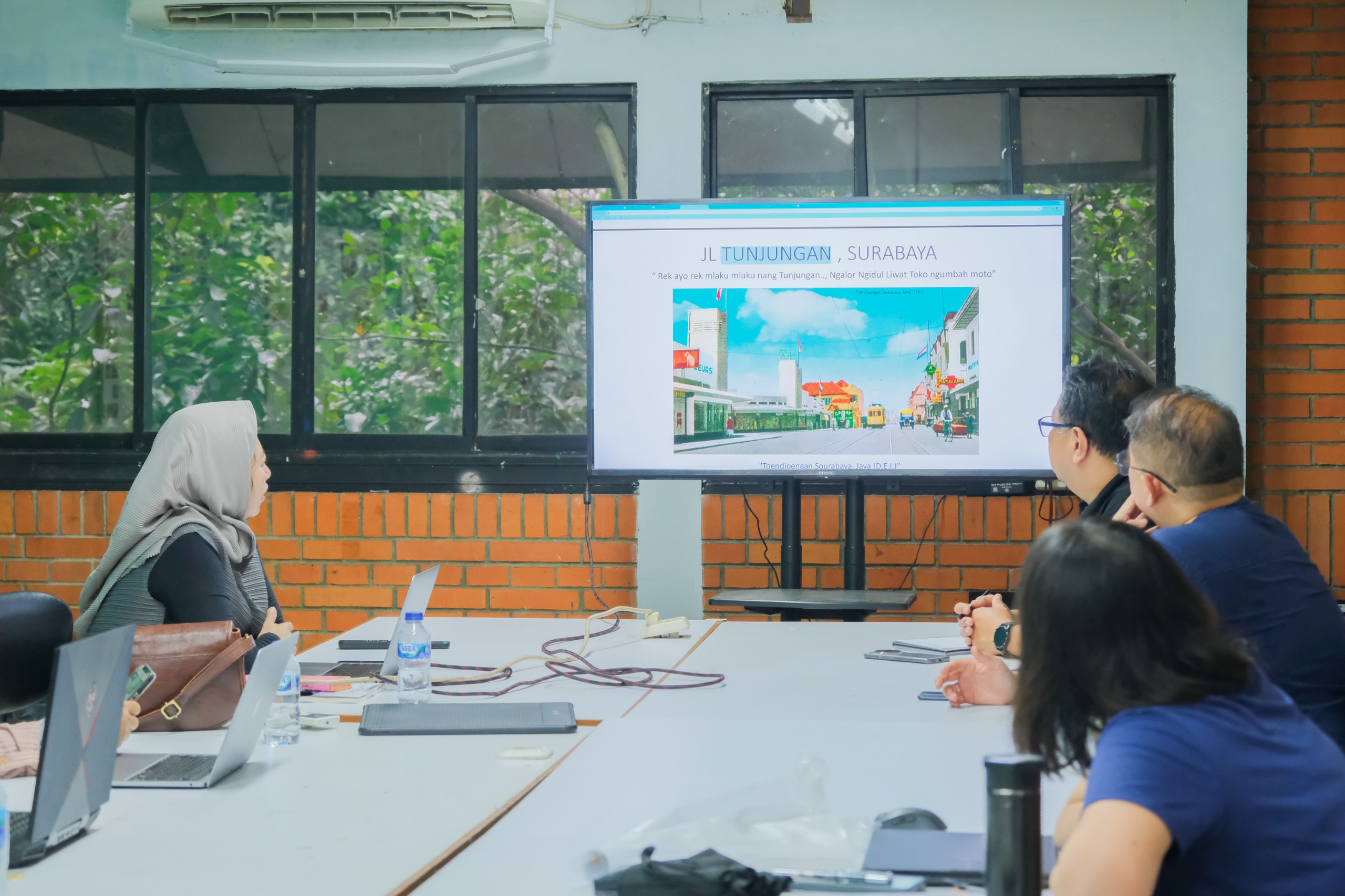On Wednesday (4/24), the Architecture Study Program, Department of Architecture, Faculty of Engineering, Universitas Indonesia (FTUI) held a workshop by inviting once again a guest lecturer from the School of Architecture and Built Environment UCSI Malaysia, Dr. Teoh Chee Keong. This workshop was organized for postgraduate students in the History and Theory of Architecture course. The workshop, held on the 3rd floor of the Department of Architecture building, FTUI, carried the theme “Urban Observing Through Mapping: Community and Its Collective Memory.”
Before starting the workshop, Prof. Dr. Kemas Ridwan Kurniawan, S.T., M.Sc., as the course instructor, delivered his opening remarks, “Thank you to Dr. Teoh for being here. Although our meeting is quite short, it doesn’t diminish the opportunity to share knowledge and methods in this workshop. I hope this workshop can produce written works that are collaborations between students and Dr. Teoh.”
During the workshop, the students presented the results of their observations regarding the respective locations of their research. For example, Andhi Seto Prasetyo conducted research in Pecinan, Pasar Lama Tangerang as his assignment material. Andhi explained that the location was the first settlement of the Chinese community in Tangerang. Many of the buildings still maintain Chinese architecture. However, over time, these buildings have experienced a decline in physical and environmental quality, as well as changes in shape and function. Most of the facades of Chinese architecture have now been transformed into modern facades that have lost their historical value.
Furthermore, Andhi focused on discussing one of the houses that have been renovated into a café, namely Kopi Lampion. Based on his research, this café has been around since the 1800s. The uniqueness of its architecture made this café a shooting location for several titles, both before and after the renovation. “In addition to its layout, the characteristic of Chinese architecture at Kopi Lampion Café is visible in its building facade. This can be seen in several parts, namely: the roof; doors and windows; walls; and sunshade. The addition of steps as accents also reinforces the Chinese architectural character,” explained Andhi.
Unlike Andhi, who discussed buildings, Daffa Shiddiq discussed a bridge, namely the Titi Gantung Bridge in Binjai. He mentioned that this bridge has historical value in his family. This is reflected in the photos taken by his grandfather, who had a hobby of photography. Based on his observations, the bridge was once used as a link from residential areas to the city and market. “Unlike the past, nowadays the bridge is mostly used to speed up the adrenaline of motorcycle users or just to buy ‘pancong’ cakes,” Daffa explained jokingly.
Arfianty Hutuba, on the other hand, focused more on the culture in Ipilo Village, Gorontalo City. Arfianty explained that in this location, there is a tradition of putting up lights on the last three days of Ramadan to welcome ‘Lailatul Qadr’. The lights initially used papaya splits filled with coconut oil and cotton wicks, then later switched to bamboo and bottle lamps or incandescent lamps. “This tradition has existed since the 15th century, initiated by residents providing lighting along the road to facilitate people’s travel to the mosque for I’tikaf,” she explained.
“I feel honoured to be here to discuss with all of you (the students). I am very pleased because you have presented things that exceeded my expectations. I hope that through this activity, we can find new ideas in the development of architecture,” said Dr. Teoh Chee Keong.
“I would like to thank Dr. Teoh for providing broad insights to FTUI students. I hope this workshop can be a forum for our students and guest lecturers to share the history, architectural theory, and architectural uniqueness of various regions in Indonesia. In the future, this discussion can enrich insights and inspire innovations in the world of architecture,” said FTUI Dean, Prof. Dr. Ir. Heri Hermansyah, S.T., M.Eng., IPU.
Teoh Chee Keong serves as Deputy Dean at the School of Architecture and Built Environment, UCSI Malaysia. He obtained his BArch (1999) and MArch (2005) degrees from Chung Yuan Christian University, Taiwan. In 2015, he was nominated for the QS Stars Award for Reimaging Education. Teoh Chee Keong’s areas of interest include Architecture and Pedagogy, Cultural Studies, and Problem-Based Learning.
***
Office of Public Communication
Faculty of Engineering, Universitas Indonesia

